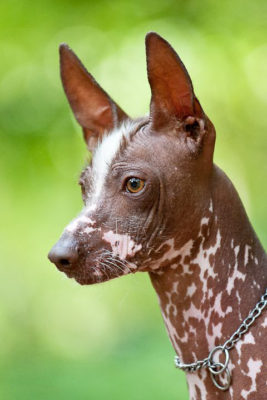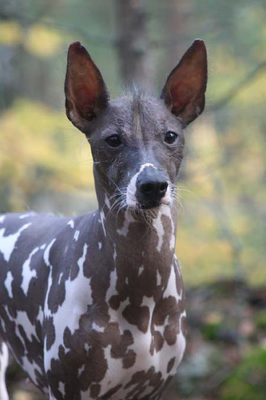Peruvian Hairless Dog
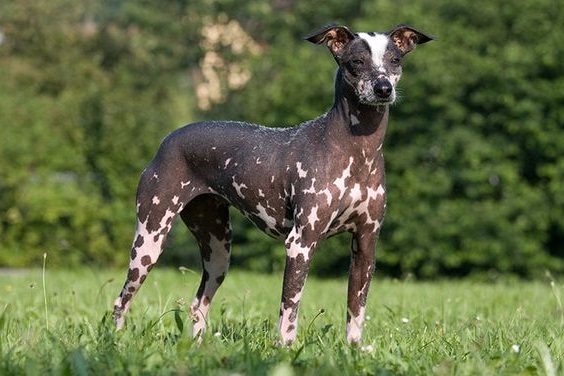
The most apparent character trait of the Peruvian Hairless Dog is considered to be poise. It is an alert, calm and friendly dog. Get along very well with children. Will not mind active games and joint amusement. Barks only, when needed, have a well-developed guarding instinct. Incredibly attached to the owner and literally can not live a day without his attention.
Table of Contents
Breed Information
| Another Name | Perro Sin Pelo de Perú, Inca Hairless Dog, Viringo, Peruvian Inca Orchid, Calato, Peruvian Walking Dead dog, Dielmatian |
| Origin | Peru |
| Height | 25-65 cm |
| Weight | 4-30 kg |
| Fur | Has no fur or very short |
| Color | Black, gray, gray-blue, dark brown, white (in any combination with each other and with marks) |
| Lifespan | 12-15 years |
| FCI Classification | Spitz and primitive types |
| Group | Dogs for the apartment |
| Price | From $600 |
Breed Photos
Origin History
We do not know much about the original origin of the breed. The first Peruvian Hairless Dogs were brought to Europe in 1502. Then they were presented to King Philip I the Beautiful, along with other honorary gifts. If we believe some of the data of Spanish archaeologists, the beginning of the breed’s existence is dated from about 300 BC. Numerous excavations and found casts, drawings, and figurines depicting the breed testify to its rich history. In Inca times, the breed was even considered sacred. People believed that the Peruvian Hairless Dog was a mediator between God, man, and the cosmos. The first standard for the breed was created and officially recognized by the International Canine Federation in 1981. Today, the breed is a national treasure of Peru and is even protected by UNESCO.
Appearance
The Peruvian Hairless Dog combines strength, harmony, and elegance. There are several varieties of dog size:
- small: height 25-40 cm, weight 4-8 kg;
- medium: height 41-50 cm, weight 8-12 kg;
- large: height 51-65 cm, weight 12-30 kg.
Unlike the Xoloitzcuintle, the Peruvian Hairless Dog has a square rather than a rectangular body. The broad skull, which narrows to the lobe of the nose, the head is generally wolf-shaped. The eyes are medium-sized, almond-shaped. When the dog is attentive or alert, the ears are standing and in a quiet state – folded back. The tips of the ears are pointed. The neck is supple and curved. The body is of medium build. Some dogs have a noticeable lumbosacral bulge. A strong loin. The tail is low, tapering toward the end.
In terms of coat type, there are also several options: naked – most often, it is an entirely bald dog with any skin color, both monochrome and with white markings all over the body. A sparse coat on the head, lower leg, and tail are acceptable. Because of the characteristic “patchiness”, the dogs were often called the Inca orchid. Representatives of the woolly variety have full dentition, while the naked variety has incomplete dentition, genetically related to the lack of fur.
Character
The most apparent character trait of the Peruvian Hairless Dog is considered to be poise. It is an alert, calm and friendly dog. Get along very well with children. Will not mind active games and joint amusement. Barks only, when needed, have a well-developed guarding instinct. Incredibly attached to the owner and literally can not live a day without his attention. What can not be said about the increased attention of the owner. The dog does not like it when strangers touch it. It is a natural peculiarity that speaks of distrust of strangers. Peruvian Hairless Dog is great for keeping in an apartment, as it does not leave any fur.
Care
There is nothing complicated about taking care of a Peruvian Hairless Dog. It is not recommended to bathe the dog often because of the effects of water on its skin. After bathing, be sure to dab the skin with moisturizing cream or oil to avoid drying and cracking. Comb the breed with short hair with a special comb or brush. Molting can be seasonal, but not for long, about two weeks. Clean ears and eyes once a week. Puppies at 2 to 3 months of age must have their ears tied. It is done so that the ears are fixed in a standing position. Nails should be trimmed several times a month. Remember that the breed is very cold in the cold season. Therefore, you should visit a pet store with your pet to ensure he has a safe winter. Moderately long walks are recommended to keep him in shape.
Training
The Peruvian Hairless Dog is intelligent, so there are no problems with its education. The breed is smart and energetic and will easily remember everything its owner requires of it.
Common Diseases
Generally, the Peruvian Hairless Dog has a fairly strong immune system, but there is a predisposition to some diseases:
- pancreatitis and other gastrointestinal problems;
- allergic reactions;
- dental problems (more relevant to the naked variety – may lose teeth);
- skin problems, including malignant and benign tumors;
- epilepsy.
Nutrition
In the feeding of the Peruvian Hairless Dog, experienced breeders prefer dry food of super-premium class. Tend to allergies, so it is better to choose hypoallergenic food. As the pet ages, it may lose teeth, so wet the food before giving it to the Peruvian. Another option is to feed your special dog pates and canned foods.
 Dalmatian
Dalmatian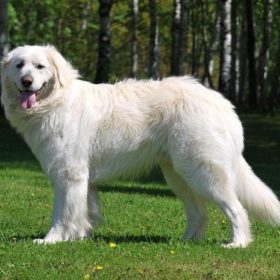 Slovak Cuvac
Slovak Cuvac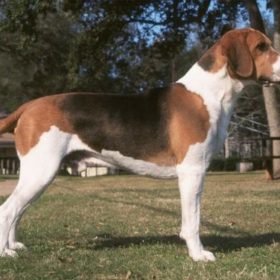 Harrier
Harrier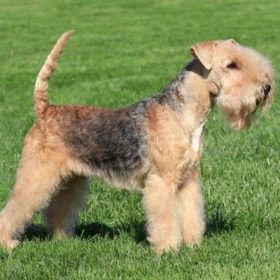 Lakeland Terrier
Lakeland Terrier Continental Toy Spaniel
Continental Toy Spaniel Bolonka
Bolonka